Version History 13
1 Introduction 16
1.1 Scope of the document 16
1.2 Related documents 16
1.3 Conventions and abbreviations 16
1.4 AT Command syntax 16
1.5 Supported character sets 18
1.6 Flow control 18
1.7 Definitions 19
2 AT Commands According to V.25TER 20
2.1 Overview of AT Commands According to V.25TER 20
2.2 Detailed Description of AT Commands According to V.25TER 21
3 AT Commands According to 3GPP TS 27.007 47
3.1 Overview of AT Command According to 3GPP TS 27.007 47
3.2 Detailed Descriptions of AT Command According to 3GPP TS 27.007 48
4 AT Commands According to 3GPP TS 27.005 101
4.1 Overview of AT Commands According to 3GPP TS 27.005 101
4.2 Detailed Descriptions of AT Commands According to 3GPP TS 27.005 101
5 AT Commands Special for SIMCom 124
5.1 Overview of AT Commands Special for SIMCom 124
5.2 Detailed Descriptions of Commands 125
6 AT Commands for TCPIP Application Toolkit 152
6.1 Overview of AT Commands for TCPIP Application Toolkit 152
6.2 Detailed Descriptions of AT Commands for TCPIP Application Toolkit 152
7 AT Commands for TCPIP Application Toolkit to Compatible with SIM800 Serials 162
7.1 Overview of AT Commands 162
7.2 Detailed Descriptions of Commands 163
8 AT Commands for HTTP/HTTPS Client 190
8.1 Overview of AT Commands for HTTP/HTTPS Client 190
8.2 Detailed Descriptions of AT Commands for HTTP/HTTPS Client 190
9 AT Commands for PING Support 204
9.1 Overview of AT Commands for PING Support 204
9.2 Detailed Descriptions of AT Commands for PING Support 204
10 AT Commands for Network Command – LwM2M 206
10.1 Overview of AT Commands for Network Command – LwM2M 206
10.2 Detailed Descriptions of AT Commands for Network Command – LwM2M 206
11 AT Commands for Network Command – MQTT 213
11.1 Overview of AT Commands for Network Command-MQTT 213
11.2 Detailed Descriptions of AT Commands for Network Command-MQTT 213
12 AT Commands for Network Command – CoAP 222
12.1 Overview of AT Commands for Network Command-CoAP 222
12.2 Detailed Descriptions of AT Commands for Network Command-CoAP 222
13 AT Commands for Network Command – SNTP 226
13.1 Overview of AT Commands for Network Command-SNTP 226
13.2 Detailed Descriptions of AT Commands for Network Command-SNTP 226
14 AT Commands for Network Command – TLS 228
14.1 Overview of AT Commands for Network Command- TLS 228
14.2 Detailed Descriptions of AT Commands for Network Command-TLS 228
15 AT Commands for Network Command –OneNet 233
15.1 Overview of AT Commands for Network Command- OneNet 233
15.2 Detailed Descriptions of AT Commands for Network Command-OneNet 234
16 AT Commands for NVRAM 250
16.1 Overview of AT Commands for NVRAM Command 250
16.2 Detailed Descriptions of AT Commands for NVRAM Command 250
17 AT Commands for CT IOT Platform 254
17.1 Overview of AT Commands for CT IOT Platform 254
17.2 Detailed Descriptions of AT Commands for CT IOT Platform 254
18 AT Commands for Network Command-DM 257
18.1 Overview of AT Commands for Network Command-DM 257
18.2 Detailed Descriptions of AT Commands for Network Command-DM 257
19 AT Commands for FOTA 259
19.1 Overview of AT Commands for FOTA 259
19.2 Detailed Descriptions of AT Commands for FOTA 259
20 Supported Unsolicited Result Codes 262
20.1 Summary of CME ERROR Codes 262
20.2 Summary of CMS ERROR Codes 269
20.3 Summary of CIS ERROR Codes 271
20.4 Summary of TLS ERROR Codes 272
20.5 Summary of Unsolicited Result Codes 274
21 AT Commands Examples 276
21.1 CoAP command 276
22 ATC Differences among SIM7020 Series 277
22.1 AT+CSCLK 277
22.2 AT*MEDRXCFG 277
Contact 278
Version History
1 Introduction
1.1 Scope of the document
1.2 Related documents
1.3 Conventions and abbreviations
1.4 AT Command syntax
1.4.1 Basic syntax
1.4.2 S Parameter syntax
1.4.3 Extended Syntax
1.4.4 Combining AT commands on the same Command line
1.4.5 Entering successive AT commands on separate lines
1.5 Supported character sets
1.6 Flow control
1.6.1 Software flow control (XON/XOFF flow control)
1.6.2 Hardware flow control (RTS/CTS flow control)
1.7 Definitions
1.7.1 Parameter Saving Mode
1.7.2 Max Response Time
2 AT Commands According to V.25TER
2.1 Overview of AT Commands According to V.25TER
2.2 Detailed Description of AT Commands According to V.25TER
2.2.1 ATE Set Command Echo Mode
2.2.2 ATI Display Product Identification Information
2.2.3 ATL Set Monitor Speaker Loudness
2.2.4 ATM Set Monitor Speaker Mode
2.2.5 ATN1 Some PC Modem Driver Initial Setting to Handshake at Highest Speed Larger Than S37
2.2.6 ATO Switch from Command Mode to Data Mode
2.2.7 ATQ Set Result Code Presentation Mode
2.2.8 ATS0 Set Number of Rings before Automatically Answering the Call
2.2.9 ATS1 Ring Counter
2.2.10 ATS2 Set Escape Sequence Character
2.2.11 ATS3 Set Command Line Termination Character
2.2.12 ATS4 Set Response Formatting Character
2.2.13 ATS5 Set Command Line Editing Character
2.2.14 ATS6 Pause Before Blind Dialling
2.2.15 ATS7 Set Number of Seconds to Wait for Connection Completion
2.2.16 ATS8 Set Number of Seconds to Wait for Comma Dial Modifier Encountered in Dial String of D Command
2.2.17 ATS10 Set Disconnect Delay after Indicating the Absence of Data Carrier
2.2.18 ATS12 Set Escape Code Guard Time
2.2.19 ATS25 Set DTR Change Time
2.2.20 ATS95 Some PC Modem Driver Initial Setting to Enable Extended Result Codes
2.2.21 ATV TA Response Format
2.2.22 ATX Set CONNECT Result Code Format and Monitor Call Progress
2.2.23 ATZ Reset Default Configuration
2.2.24 AT&C Set DCD Function Mode
2.2.25 AT&D Set DTR Function Mode
2.2.26 AT&F Factory Defined Configuration
2.2.27 AT&K Flow Control Setting
2.2.28 AT&V Display Current Configuration
2.2.29 AT&W Store Active Profile
2.2.30 AT+DR V.42bis data compression reporting control
2.2.31 AT+DS V.42bis data compression control
2.2.32 AT+GCAP Request Complete TA Capabilities List
2.2.33 AT+GMI Request Manufacturer Identification
2.2.34 AT+GMM Request TA Model Identification
2.2.35 AT+GMR Request TA Revision Identification of Software Release
2.2.36 AT+GOI Request Global Object Identification
2.2.37 AT+GSN Request TA Serial Number Identification (IMEI)
2.2.38 AT+ICF Set TE-TA Control Character Framing
2.2.39 AT+IFC Set TE-TA Local Data Flow Control
2.2.40 AT+ILRR Set TE-TA Local rate reporting mode
2.2.41 AT+IPR Set TE-TA Fixed Local Rate
2.2.42 AT+FCLASS Set Fax Class
3 AT Commands According to 3GPP TS 27.007
3.1 Overview of AT Command According to 3GPP TS 27.007
3.2 Detailed Descriptions of AT Command According to 3GPP TS 27.007
3.2.1 AT+CEER Extended Error Report
3.2.2 AT+CGMI Request Manufacturer Identification
3.2.3 AT+CGMM Request Model Identification
3.2.4 AT+CGMR Request TA Revision Identification of Software Release
3.2.5 AT+CGOI Request global object identification
3.2.6 AT+CGSN Request Product Serial Number Identification
3.2.7 AT+CIMI Request International Mobile Subscriber Identity
3.2.8 AT+CLCK Facility Lock
3.2.9 AT+CMAR Master Reset
3.2.10 AT+CMEE Report Mobile Equipment Error
3.2.11 AT+COPS Operator Selection
3.2.12 AT+CPIN Enter PIN
3.2.13 AT+CPWD Change Password
3.2.14 AT+CR Service Reporting Control
3.2.15 AT+CREG Network Registration
3.2.16 AT+CRSM Restricted SIM Access
3.2.17 AT+CSCS Select TE Character Set
3.2.18 AT+CSQ Signal Quality Report
3.2.19 AT+CMUX Multiplexer Control
3.2.20 AT+CNUM Subscriber Number
3.2.21 AT+CPOL Preferred Operator List
3.2.22 AT+CFUN Set Phone Functionality
3.2.23 AT+CCLK Clock
3.2.24 AT+CSIM Generic SIM Access
3.2.25 AT+CBC Battery Charge
3.2.26 AT+CTZR Time Zone Reporting
3.2.27 AT+CTZU Automatic Time Update
3.2.28 AT+CPLS Selection of preferred PLMN List
3.2.29 AT+CPSMS Power Saving Mode Setting
3.2.30 AT+CCIOTOPT CIoT optimization configuration
3.2.31 AT+CEDRXS eDRX Setting
3.2.32 AT+CEDRXRDP eDRX Read Dynamic Parameters
3.2.33 AT+CCHO Open UICC Logical Channel
3.2.34 AT+CCHC Close UICC logical channel
3.2.35 AT+CGLA Generic UICC Logical Channel Access
3.2.36 AT+CPINR Remaining PIN Retries
3.2.37 AT+CGATT GPRS/Packet Domain Attach or Detach
3.2.38 AT+CGDCONT Define PDP Context
3.2.39 AT+CGACT PDP Context Activate or Deactivate
3.2.40 AT+CGPADDR Show PDP Address
3.2.41 AT+IPCONFIG Show the Complete PDP Address
3.2.42 AT+CGEREP Packet Domain Event Reporting
3.2.43 AT+CGREG Network Registration Status
3.2.44 AT+CGCONTRDP PDP Context Read Dynamic Parameters
3.2.45 AT+CGPIAF Printing IP Address Format
3.2.46 AT+CGDEL Delete Non-Active PDP Contexts
3.2.47 AT+CGAUTH Define PDP Context Authentication Parameters
3.2.48 AT*MCGDEFCONT Set Default PSD Connection Settings
3.2.49 AT+CEREG EPS Network Registration Status
3.2.50 AT+CGDATA Enter Data State
4 AT Commands According to 3GPP TS 27.005
4.1 Overview of AT Commands According to 3GPP TS 27.005
4.2 Detailed Descriptions of AT Commands According to 3GPP TS 27.005
4.2.1 AT+CMGD Delete SMS Message
4.2.2 AT+CMGF Select SMS Message Format
4.2.3 AT+CMGL List SMS Messages from Preferred Store
4.2.4 AT+CMGR Read SMS Message
4.2.5 AT+CMGS Send SMS Message
4.2.6 AT+CMGW Write SMS Message to Memory
4.2.7 AT+CMSS Send SMS Message from Storage
4.2.8 AT+CMGC Send SMS Command
4.2.9 AT+CNMI New SMS Message Indications
4.2.10 AT+CPMS Preferred SMS Message Storage
4.2.11 AT+CRES Restore SMS Settings
4.2.12 AT+CSAS Save SMS Settings
4.2.13 AT+CSCA SMS Service Center Address
4.2.14 AT+CSDH Show SMS Text Mode Parameters
4.2.15 AT+CSMP Set SMS Text Mode Parameters
4.2.16 AT+CSMS Select Message Service
4.2.17 AT+CNMA New Message Acknowledgement to ME/TA
4.2.18 AT+CMMS More Messages to Send
5 AT Commands Special for SIMCom
5.1 Overview of AT Commands Special for SIMCom
5.2 Detailed Descriptions of Commands
5.2.1 AT+CPOWD Power Off
5.2.2 AT+CADC Read ADC
5.2.3 AT+CLTS Get Local Timestamp
5.2.4 AT+CBAND Get and Set Mobile Operation Band
5.2.5 AT+CBANDSL Set Modem NB-IOT Search Prefer Band List
5.2.6 AT+CENG Report Network State
5.2.7 AT+CCID Show ICCID
5.2.8 AT+EXUNSOL Enable or Disable Proprietary Unsolicited Indications
5.2.9 AT+GSV Display Product Identification Information
5.2.10 AT*CELLLOCK Set the List of ARFCN Which Needs to Be Locked
5.2.11 AT+SLEDS Set the Timer Period of Net Light
5.2.12 AT+CNETLIGHT Close the Net Light or Open It to Shining
5.2.13 AT+CSMINS SIM Inserted Status Reporting
5.2.14 AT+CSPCHSC Set Scrambling Algorithm for NPDSCH
5.2.15 AT+CPSMSTATUS Enable Deep Sleep Wakeup Indication
5.2.16 AT+CSCLK Configure Slow Clock
5.2.17 AT+CRESET Trigger WDT Reset
5.2.18 AT+CREVHEX Control the Data Output Format
5.2.19 AT+CDISAUPDN Control the Auto PDN Status
5.2.20 AT+CNWRCCFG Network Recovery Configure
5.2.21 AT+CURTC Control CCLK Show UTC Or RTC Time
5.2.22 AT+CHOMENW Display Home Network Information
5.2.23 AT+CBATCHK Set VBAT Checking Feature ON/OFF
5.2.24 AT+CGPIO Control the GPIO by PIN Index
5.2.25 AT*MEDRXCFG eDRX Configuaration
5.2.26 AT*MSACL Enable/Disable ACL feature
5.2.27 AT*MLACL Display ACL List
5.2.28 AT*MWACL Write an ACL entry
5.2.29 AT*MDACL Delete an ACL entry
5.2.30 AT+CNBIOTDT NB-IOT Data Type
5.2.31 AT+CNBIOTRAI NB-IOT Release Assistance Indication
6 AT Commands for TCPIP Application Toolkit
6.1 Overview of AT Commands for TCPIP Application Toolkit
6.2 Detailed Descriptions of AT Commands for TCPIP Application Toolkit
6.2.1 AT+CSOC Create a TCP/UDP Socket
6.2.2 AT+CSOCON Connect Socket To Remote Address and Port
6.2.3 AT+CSOB Bind Local Address and Local Port
6.2.4 AT+RETENTION Retention of Socket Scene
6.2.5 AT+CSOSEND Send Data to Remote via Socket
6.2.6 AT+CSODSEND Send Data to Remote via Socket with Data Mode
6.2.7 AT+CSOCL Close Socket
6.2.8 AT+CSOSENDFLAG Set TCP Send Flag
6.2.9 AT+CSORCVFLAG Set Receive Flag
6.2.10 AT+CSOSTATUS Get Socket Status
6.2.11 AT+CSOACK Query Previous Connection Data Transmitting State
6.2.12 AT+CSOALIVE Set TCP Keepalive Parameters
6.2.13 +CSONMI Socket message arrived indicator
6.2.14 +CSOERR Socket Error Indicator
7 AT Commands for TCPIP Application Toolkit to Compatible with SIM800 Serials
7.1 Overview of AT Commands
7.2 Detailed Descriptions of Commands
7.2.1 AT+CIPMUX Start Up Multi-IP Connection
7.2.2 AT+CIPSTART Start Up TCP or UDP Connection
7.2.3 AT+CIPSEND Send Data Through TCP or UDP Connection
7.2.4 AT+CIPQSEND Select Data Transmitting Mode
7.2.5 AT+CIPACK Query Previous Connection Data Transmitting State
7.2.6 AT+CIPCLOSE Close TCP or UDP Connection
7.2.7 AT+CIPSHUT Deactivate GPRS PDP Context
7.2.8 AT+CLPORT Set Local Port
7.2.9 AT+CSTT Start Task and Set APN,USER NAME,PASSWORD
7.2.10 AT+CIICR Bring Up Wireless Connection
7.2.11 AT+CIFSR Get Local IP Address
7.2.12 AT+CIPSTATUS Query Current Connection Status
7.2.13 AT+CDNSCFG Configure Domain Name Server
7.2.14 AT+CDNSGIP Query the IP Address of Given Domain Name
7.2.15 AT+CIPHEAD Add an IP Head at the Beginning of a Package Received
7.2.16 AT+CIPHEXS Show Data in Hex Mode of a Package Received
7.2.17 AT+CIFSREX Get Local IP Address
7.2.18 AT+CIPATS Set Auto Sending Timer
7.2.19 AT+CIPSPRT Set Prompt of ‘>’ When Module Sends Data
7.2.20 AT+CIPCSGP Set CSD or GPRS for Connection Mode
7.2.21 AT+CIPSRIP Show Remote IP Address and Port When Received Data
7.2.22 AT+CIPSHOWTP Display Transfer Protocol in IP Head When Received Data
7.2.23 AT+CIPUDPMODE UDP Extended Mode
7.2.24 AT+CIPRXGET Get Data from Network Manually
7.2.25 AT+CIPTKA Set TCP Keepalive Parameters
7.2.26 AT+CIPMODE Open Transparent Mode
7.2.27 AT+CIPCHAN Enter Transparent Mode
8 AT Commands for HTTP/HTTPS Client
8.1 Overview of AT Commands for HTTP/HTTPS Client
8.2 Detailed Descriptions of AT Commands for HTTP/HTTPS Client
8.2.1 AT+CHTTPCREATE Create a HTTP/HTTPS Client Instance
8.2.2 AT+CHTTPCREATEEXT Create a HTTP/HTTPS Client Instance by Multi Packages for a Long Size Command
8.2.3 AT+CHTTPCON Establish the HTTP/HTTPS Connection
8.2.4 AT+CHTTPDISCON Close the HTTP/HTTPS Connection
8.2.5 AT+CHTTPDESTROY Destroy the HTTP/HTTPS Client Instance
8.2.6 AT+CHTTPSEND Send HTTP/HTTPS Package
8.2.7 AT+CHTTPSENDEXT Send HTTP/HTTPS Package by Multi Packages for a Long Size Command
8.2.8 AT+CHTTPPARA Set Parmeter for AT Command of AT+CHTTPSEND
8.2.9 AT+CHTTPTOFS Download File to Module System
8.2.10 AT+CHTTPCLRMULCRTBUF Clear Multi Create Buffer of AT+CHTTPCREATEEXT
8.2.11 AT+CHTTPCLRMULSNDBUF Clear Multi Send Buffer of AT+CHTTPSENDEXT
8.2.12 AT+CHTTPRESUMESEND Set Resume Send Package or not when HTTP Disconnected
8.2.13 +CHTTPNMIH Header of the Response from Host
8.2.14 +CHTTPNMIC Content of The Response from Host
8.2.15 +CHTTPERR HTTP Client Connection Error Indicator
8.2.16 +CHTTPTOFS HTTP Download Indicate from Host
8.2.17 +CHTTPTOFSOK HTTP Download Finished Indicate
9 AT Commands for PING Support
9.1 Overview of AT Commands for PING Support
9.2 Detailed Descriptions of AT Commands for PING Support
9.2.1 AT+CIPPING Test IP Network Connectivity to A Remote Host
10 AT Commands for Network Command – LwM2M
10.1 Overview of AT Commands for Network Command – LwM2M
10.2 Detailed Descriptions of AT Commands for Network Command – LwM2M
10.2.1 AT+CLMCONF Configure LwM2M Instance and Create the Connection
10.2.2 AT+CLMADDOBJ Add LwM2M Object
10.2.3 AT+CLMDELOBJ Delete LwM2M Object
10.2.4 AT+CLMREAD Read Notification and Command
10.2.5 AT+CLMWRITE Write Notification and Command
10.2.6 AT+CLMEXECUTE Execute Notification and Command
10.2.7 AT+CLMNOTIFY Notify Data Change
10.2.8 AT+CLMDEL Delete LwM2M Instance
10.2.9 +CLMOBSERVE Indicated an observe command
10.2.10 +CLMPARAMETER Indicated an observer's parameter
10.2.11 +CLMERR Indicated there are Some Errors
11 AT Commands for Network Command – MQTT
11.1 Overview of AT Commands for Network Command-MQTT
11.2 Detailed Descriptions of AT Commands for Network Command-MQTT
11.2.1 AT+CMQNEW New MQTT
11.2.2 AT+CMQCON Send MQTT Connection Packet
11.2.3 AT+CMQDISCON Disconnect MQTT
11.2.4 AT+CMQSUB Send MQTT Subscribe Packet
11.2.5 AT+CMQUNSUB Send MQTT Unsubscribe Packet
11.2.6 AT+CMQPUB Send MQTT Publish Packet
11.2.7 +CMQDISCON MQTT Disconnect Indication
11.2.8 AT+CMQALICFG Configure Alibaba Clound Parameters
11.2.9 AT+CMQALICON Send MQTT Connection Packet to Alibaba Cloud
11.2.10 AT+CMQTTSNEW New MQTTS
11.2.11 AT+CMQTTSNEWEXT NEW a MQTTS Instance by Multi Packages for a Long Size Command
12 AT Commands for Network Command – CoAP
12.1 Overview of AT Commands for Network Command-CoAP
12.2 Detailed Descriptions of AT Commands for Network Command-CoAP
12.2.1 AT+CCOAPNEW Create a CoAP Client Instance
12.2.2 AT+CCOAPSEND Send CoAP Data
12.2.3 AT+CCOAPCSEND Send CoAP Data
12.2.4 AT+CCOAPDEL Destory the CoAP Client Instance
12.2.5 +CCOAPNMI Content from CoAP server
13 AT Commands for Network Command – SNTP
13.1 Overview of AT Commands for Network Command-SNTP
13.2 Detailed Descriptions of AT Commands for Network Command-SNTP
13.2.1 AT+CSNTPSTART Start to Query Network Time
13.2.2 AT+CSNTPSTOP Stop to Query Network Time
13.2.3 +CSNTP Received Network Time
14 AT Commands for Network Command – TLS
14.1 Overview of AT Commands for Network Command- TLS
14.2 Detailed Descriptions of AT Commands for Network Command-TLS
14.2.1 AT+CTLSCFG Configure TLS Parameters
14.2.2 AT+CTLSCONN Create a TLS Connection
14.2.3 AT+CTLSCLOSE Close a TLS Connection
14.2.4 AT+CTLSSEND Send Data
14.2.5 AT+CTLSRECV Receive Data
14.2.6 AT+CSETCA Set the Certificate Parameters
15 AT Commands for Network Command –OneNet
15.1 Overview of AT Commands for Network Command- OneNet
15.2 Detailed Descriptions of AT Commands for Network Command-OneNet
15.2.1 AT+MIPLCREATE Create a OneNet Instance
15.2.2 AT+MIPLCREATEEXT Another Method to Create a OneNet Instance
15.2.3 AT+MIPLDELETE Delete a OneNet Instance
15.2.4 AT+MIPLOPEN Register to OneNet
15.2.5 AT+MIPLCLOSE Deregister to OneNet
15.2.6 AT+MIPLADDOBJ Add an Object
15.2.7 AT+MIPLDELOBJ Delete an Object
15.2.8 AT+MIPLUPDATE Update Registration
15.2.9 AT+MIPLREADRSP Read Response from User
15.2.10 AT+MIPLWRITERSP Write Response from User
15.2.11 AT+MIPLEXECUTERSP Execute Response from User
15.2.12 AT+MIPLOBSERVERSP Observe Response from User
15.2.13 AT+MIPLDISCOVERRSP Discover Response from User
15.2.14 AT+MIPLPARAMETERRSP Set Parameter from User
15.2.15 AT+MIPLNOTIFY Notify Data Value Change from User
15.2.16 AT+MIPLVER Read Version
15.2.17 +MIPLREAD Read Request to User
15.2.18 +MIPLWRITE Write Request to User
15.2.19 +MIPLEXECUTE Execute Request to User
15.2.20 +MIPLOBSERVE Observe Request to User
15.2.21 +MIPLDISCOVER Discover request to User
15.2.22 +MIPLPARAMETER Set Parameter Request to User
15.2.23 +MIPLEVENT Event Indication to User
16 AT Commands for NVRAM
16.1 Overview of AT Commands for NVRAM Command
16.2 Detailed Descriptions of AT Commands for NVRAM Command
16.2.1 AT+CNVMR Read Data from NVRAM
16.2.2 AT+CNVMW Write Data to NVRAM
16.2.3 AT+CNVMIVD Invalidate a Specific Data Item in NVRAM
16.2.4 AT+CNVMGET Get all Customer Data Item IDs from NVRAM
17 AT Commands for CT IOT Platform
17.1 Overview of AT Commands for CT IOT Platform
17.2 Detailed Descriptions of AT Commands for CT IOT Platform
17.2.1 AT+CM2MCLINEW Register to CT IOT Platform
17.2.2 AT+CM2MCLISEND Send Data to CT IOT Platform
17.2.3 AT+CM2MCLIDEL Deregister to CT IOT Platform
17.2.4 AT+CM2MCLIGET Get the Lastest 6 Received Data
17.2.5 +CM2MCLI CT IOT Client Notification
17.2.6 +CM2MCLIRECV Receive data from CT IOT Platform
18 AT Commands for Network Command-DM
18.1 Overview of AT Commands for Network Command-DM
18.2 Detailed Descriptions of AT Commands for Network Command-DM
18.2.1 AT+DMCONFIGEXT Configure paramters for DM
18.2.2 AT+DMSET Set DM State
19 AT Commands for FOTA
19.1 Overview of AT Commands for FOTA
19.2 Detailed Descriptions of AT Commands for FOTA
19.2.1 AT+CFOTA FOTA Operation
19.2.2 AT+CFLE Flash Erase
19.2.3 AT+CFLW Flash Write
19.2.4 AT+CFLR Flash Read
20 Supported Unsolicited Result Codes
20.1 Summary of CME ERROR Codes
20.1.1 CME Error Codes Related to mobile equipment or network
20.1.2 CME Error Codes related to PSD and Packet Domain
20.1.3 CME Error Codes related to select TE character set
20.1.4 CME Error Codes related to preferred operator list
20.1.5 CME Error Codes related to Restricted/Generic SIM Access
20.1.6 CME Error Codes related to Miscellaneous Proprietary
20.1.7 CME Error Codes related to report Network State
20.2 Summary of CMS ERROR Codes
20.3 Summary of CIS ERROR Codes
20.4 Summary of TLS ERROR Codes
20.5 Summary of Unsolicited Result Codes
21 AT Commands Examples
21.1 CoAP command
22 ATC Differences among SIM7020 Series
22.1 AT+CSCLK
22.2 AT*MEDRXCFG
Contact
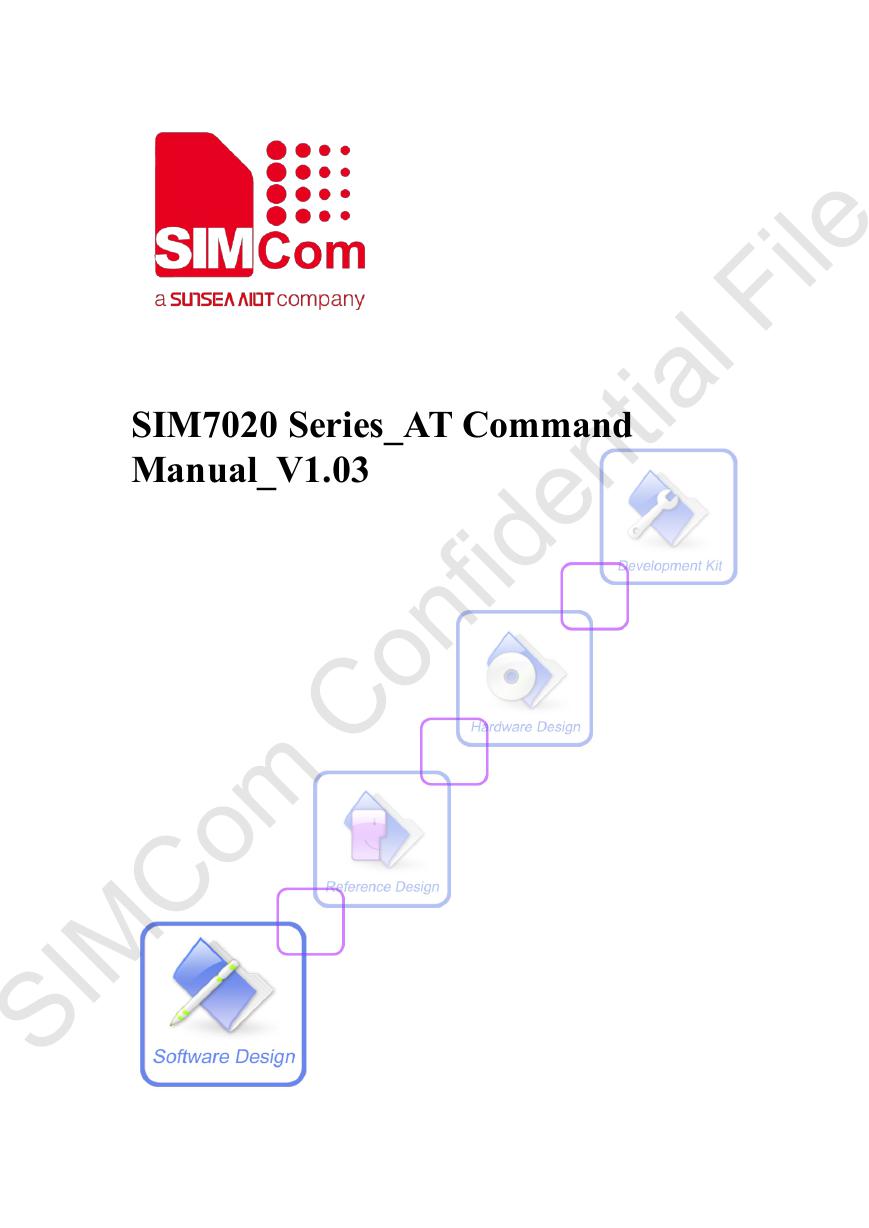
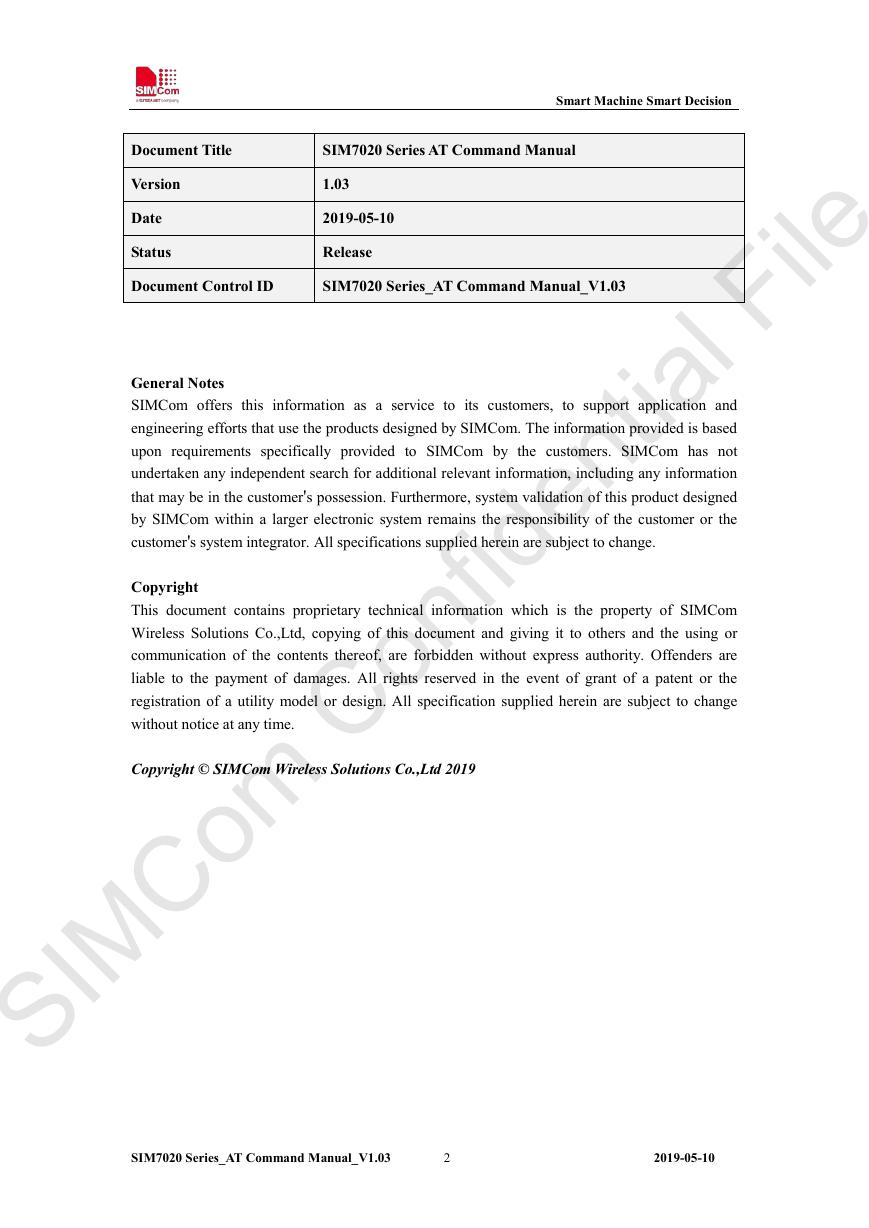
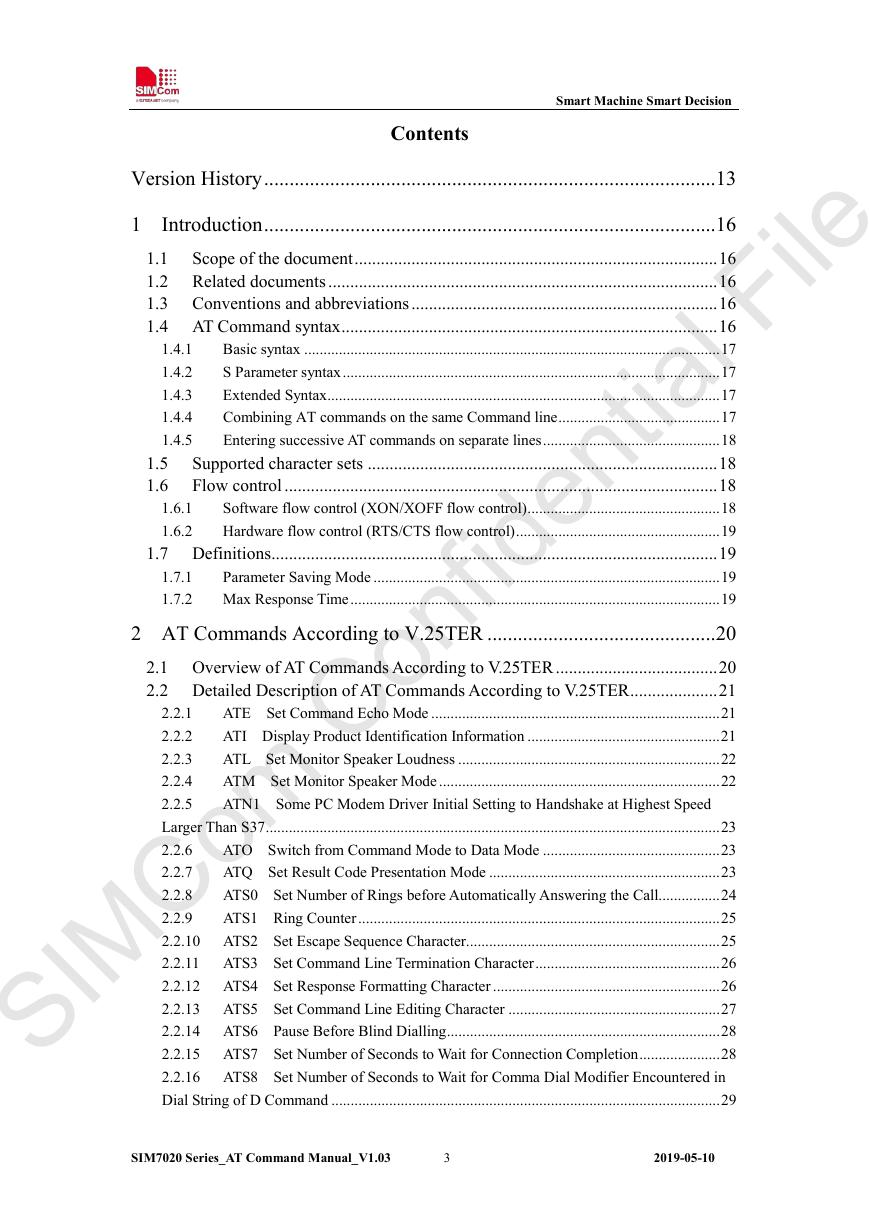
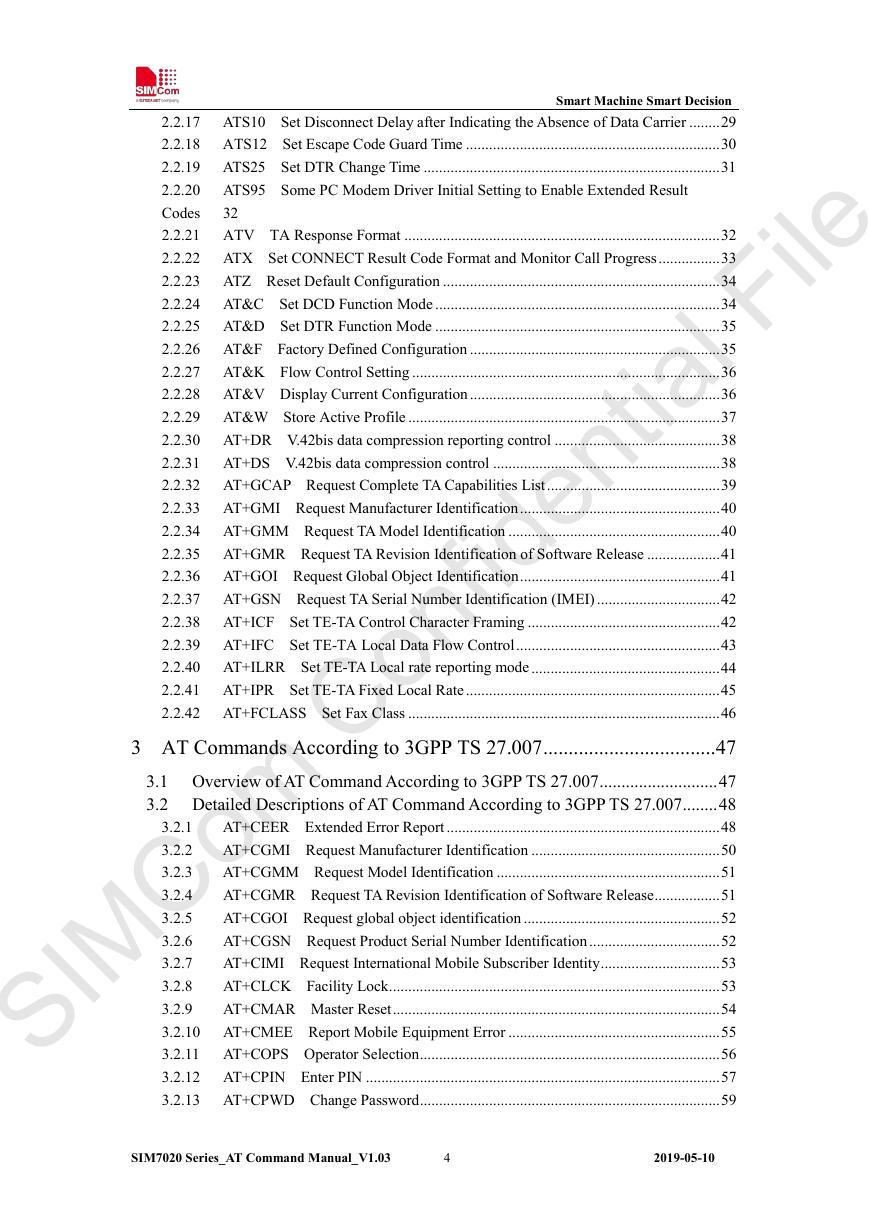
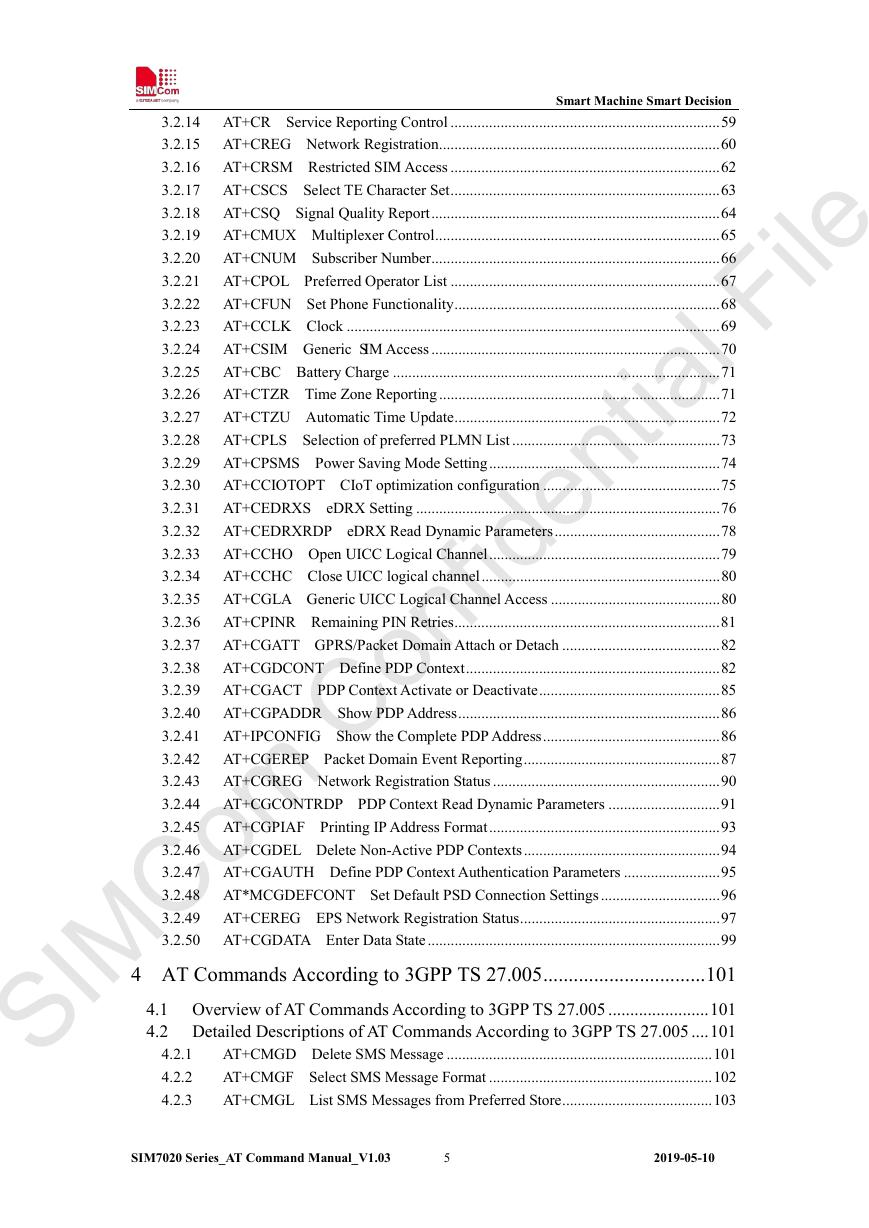
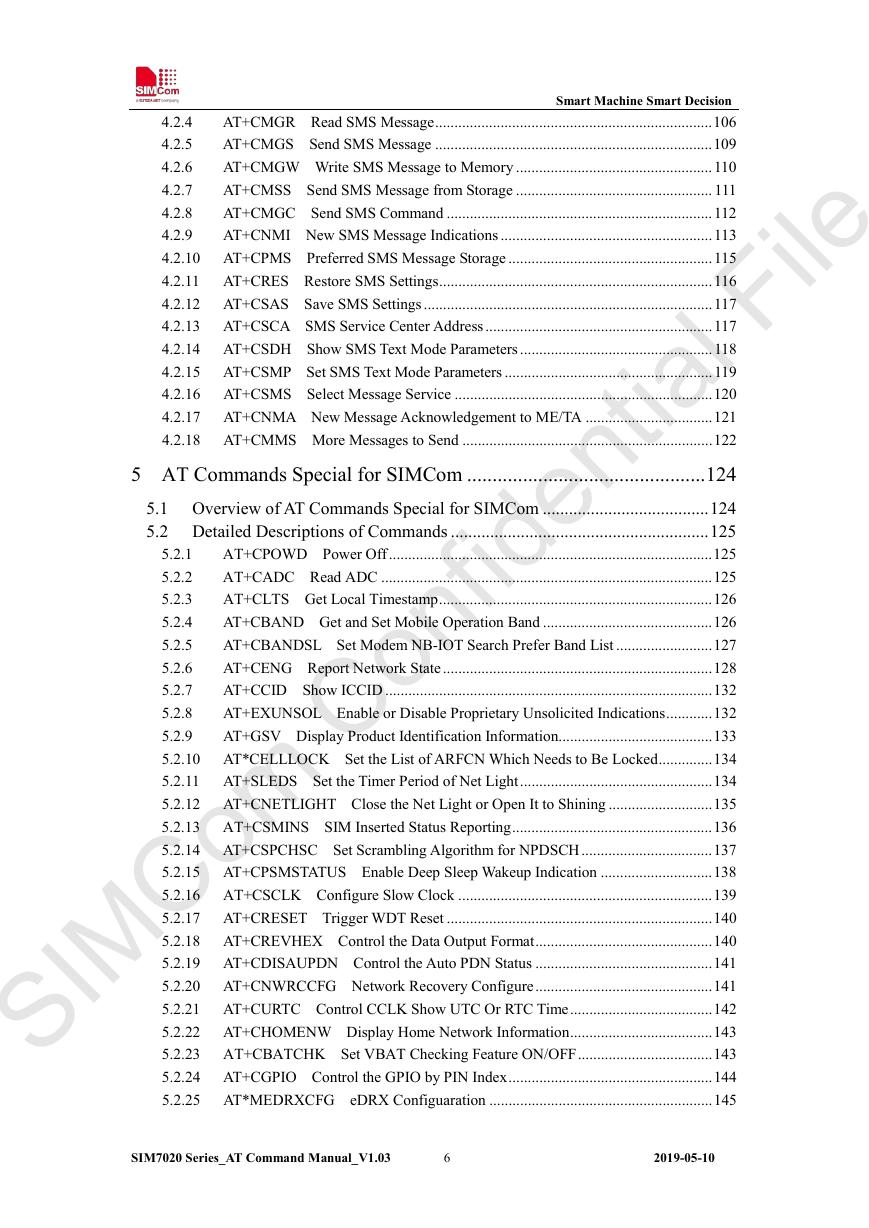

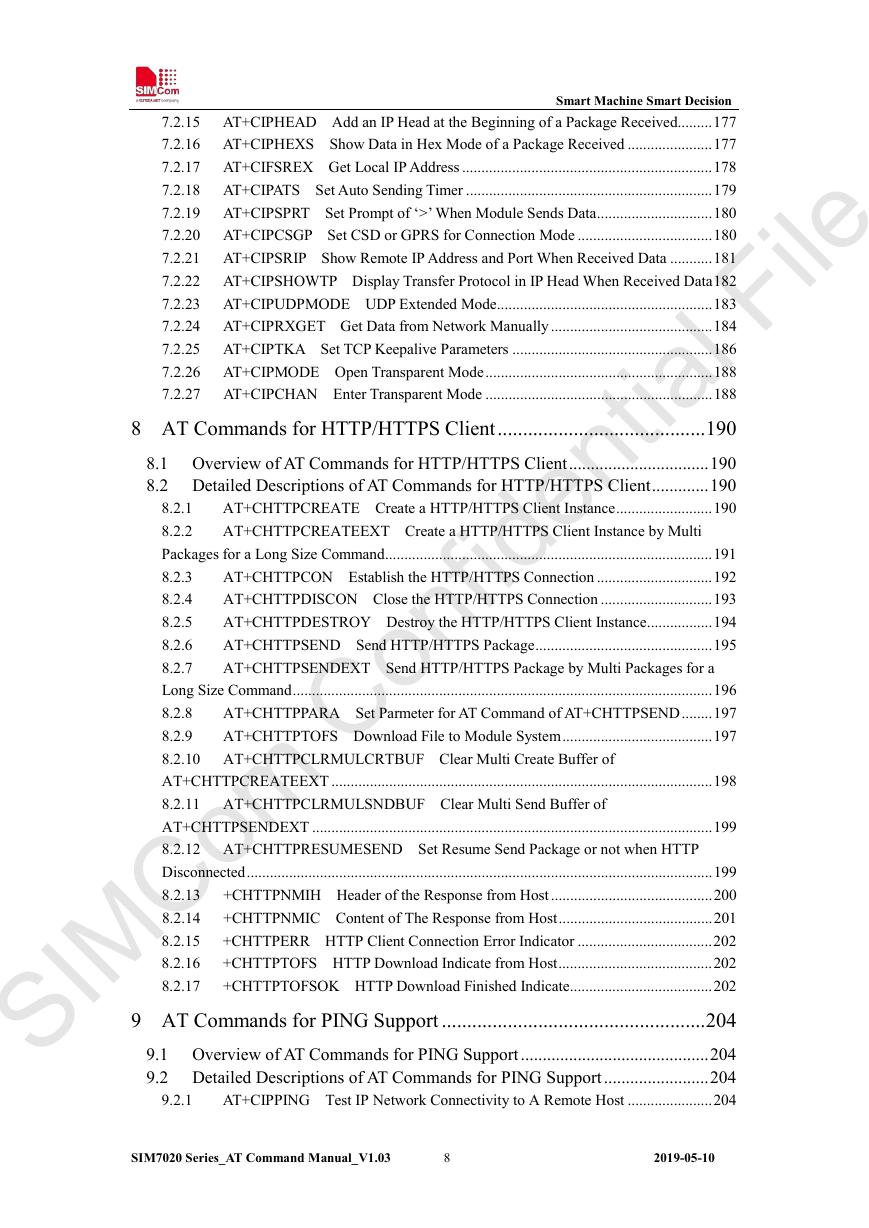








 V2版本原理图(Capacitive-Fingerprint-Reader-Schematic_V2).pdf
V2版本原理图(Capacitive-Fingerprint-Reader-Schematic_V2).pdf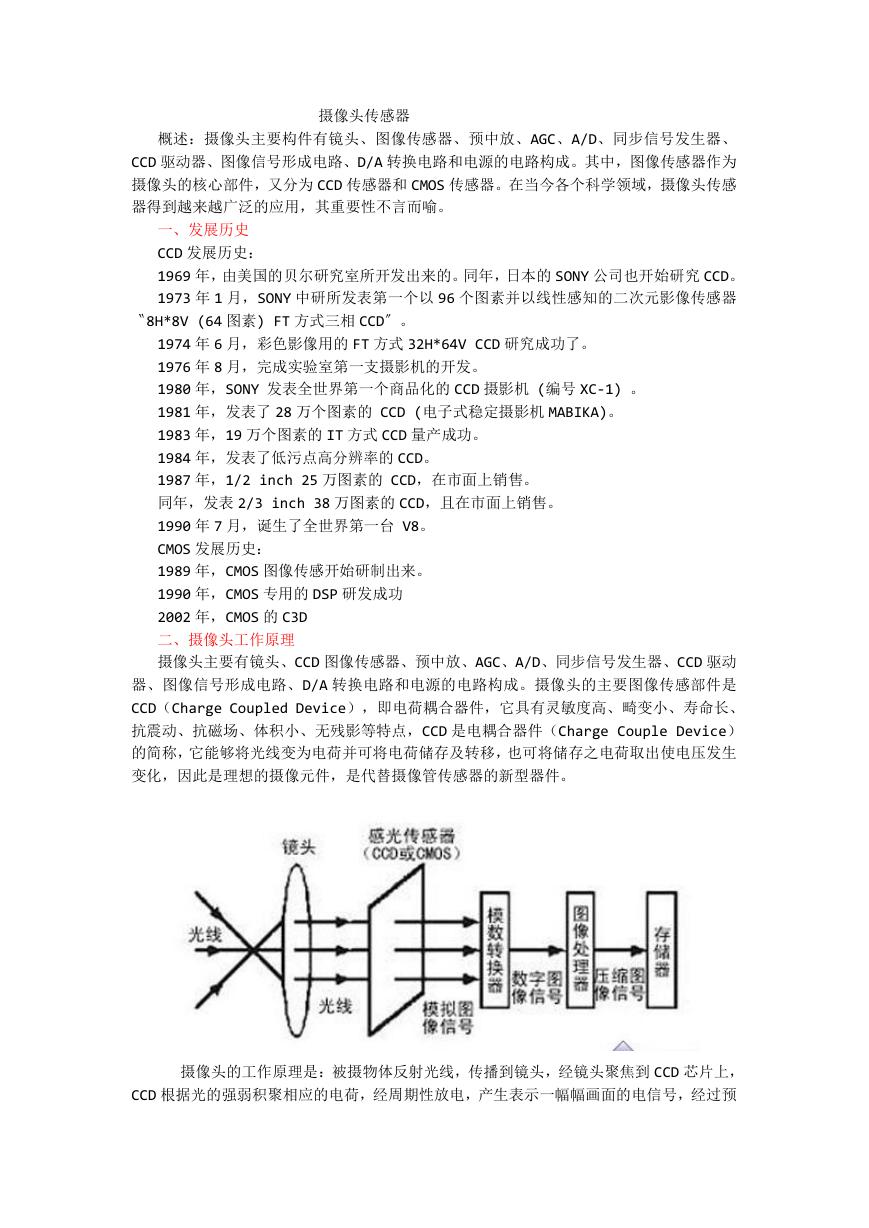 摄像头工作原理.doc
摄像头工作原理.doc VL53L0X简要说明(En.FLVL53L00216).pdf
VL53L0X简要说明(En.FLVL53L00216).pdf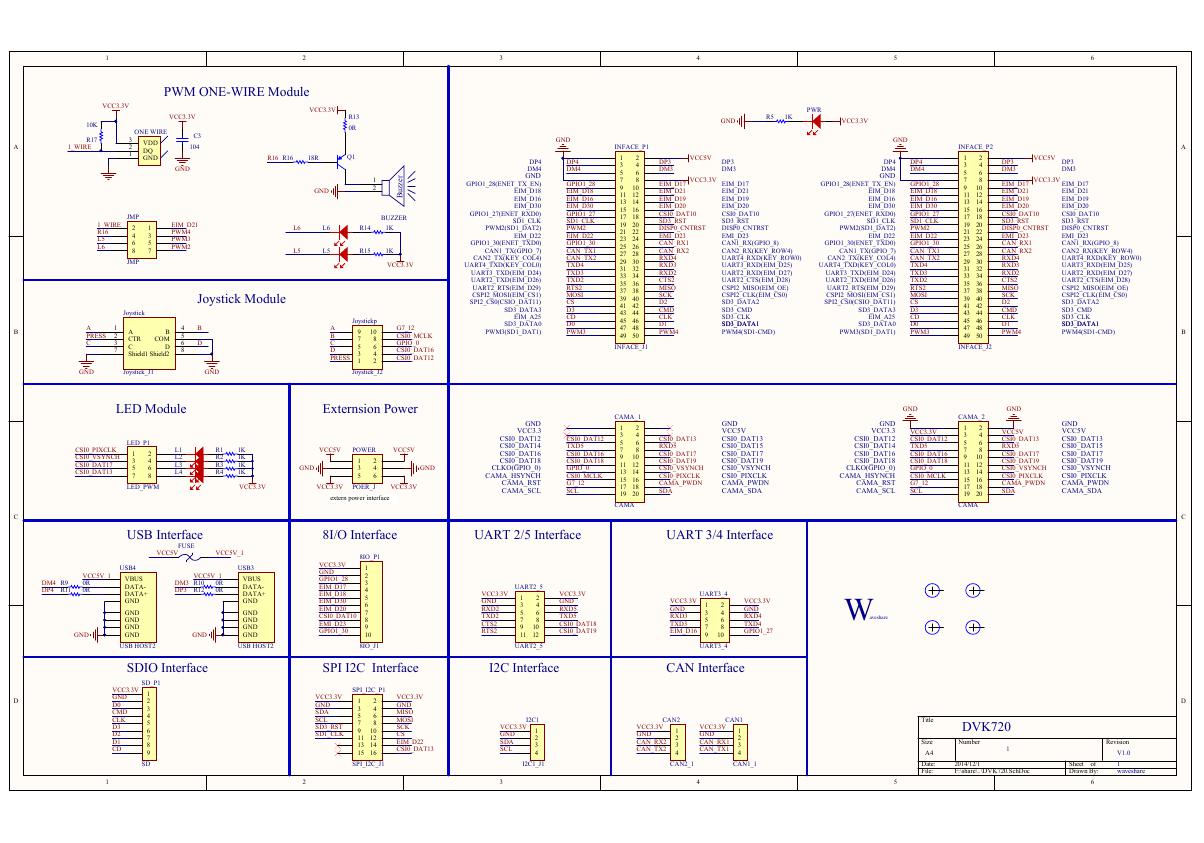 原理图(DVK720-Schematic).pdf
原理图(DVK720-Schematic).pdf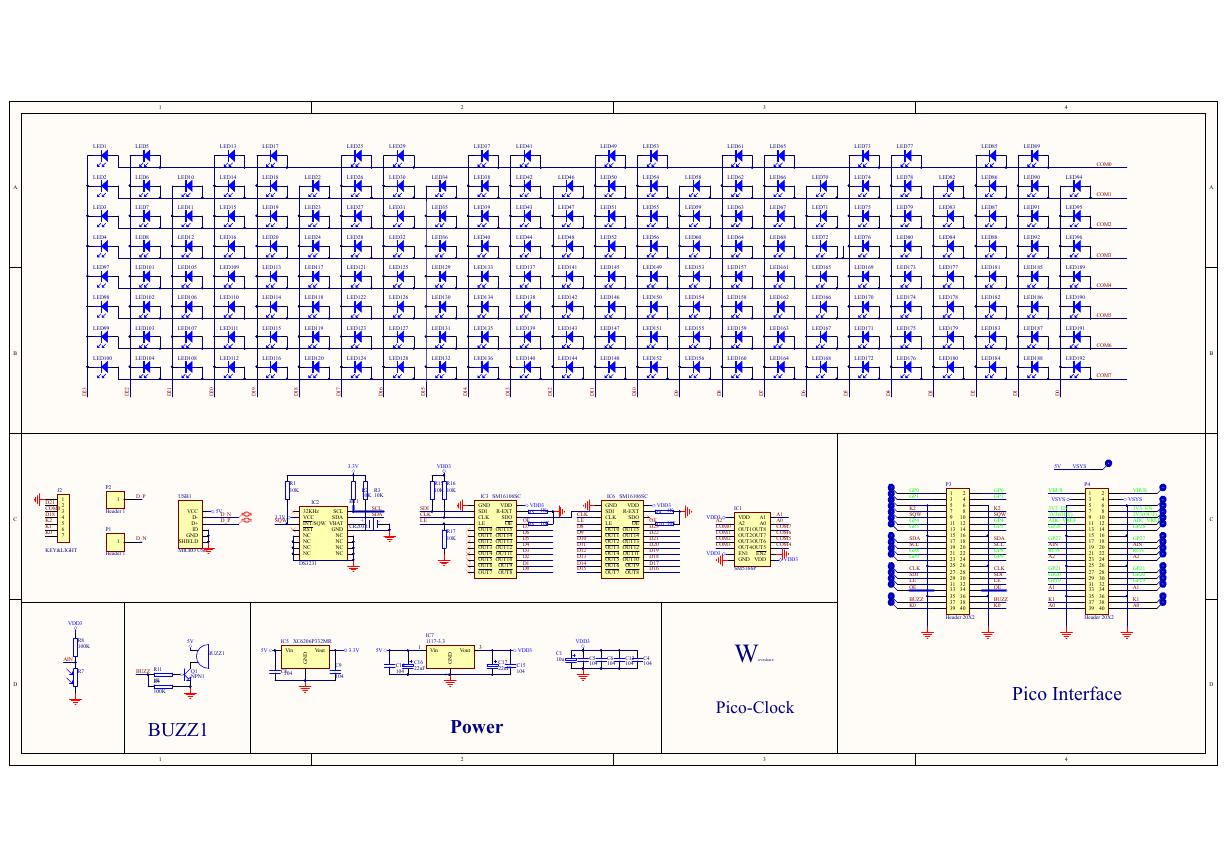 原理图(Pico-Clock-Green-Schdoc).pdf
原理图(Pico-Clock-Green-Schdoc).pdf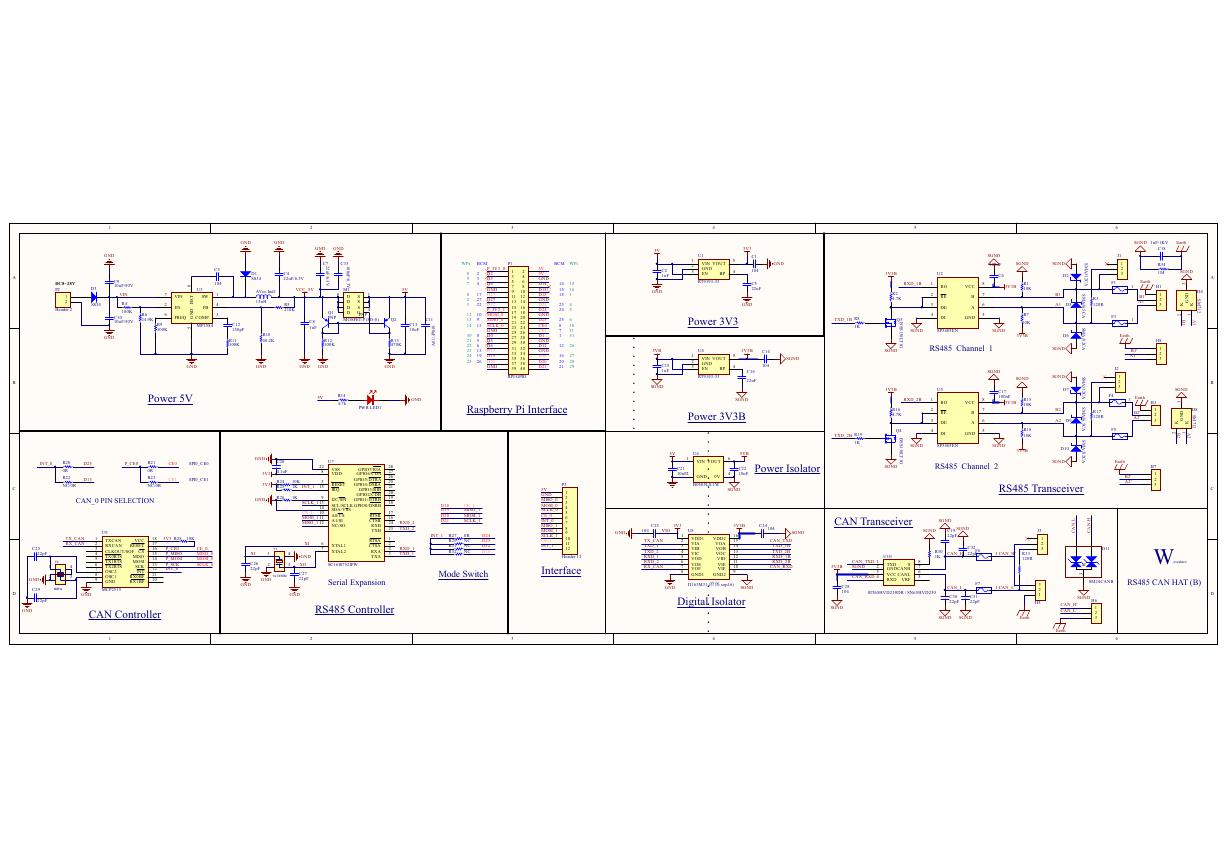 原理图(RS485-CAN-HAT-B-schematic).pdf
原理图(RS485-CAN-HAT-B-schematic).pdf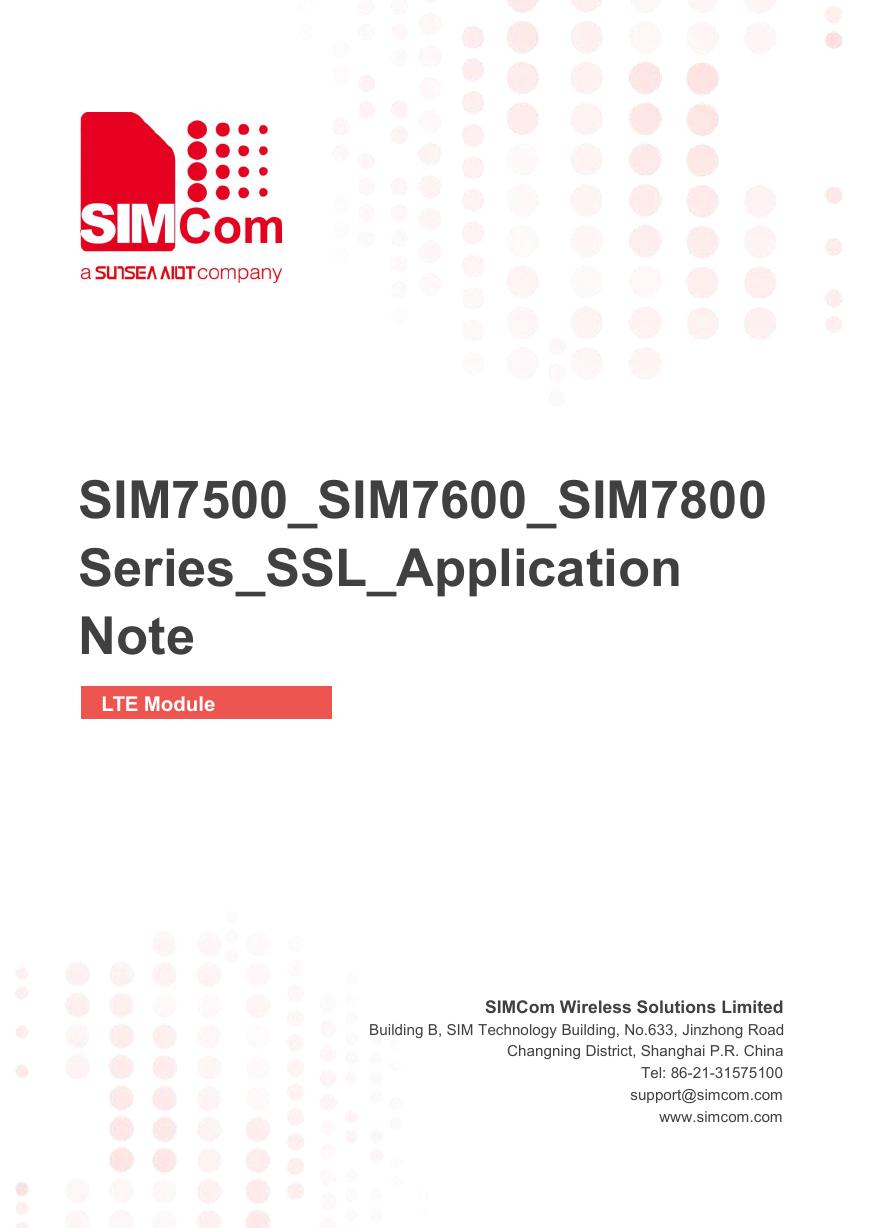 File:SIM7500_SIM7600_SIM7800 Series_SSL_Application Note_V2.00.pdf
File:SIM7500_SIM7600_SIM7800 Series_SSL_Application Note_V2.00.pdf ADS1263(Ads1262).pdf
ADS1263(Ads1262).pdf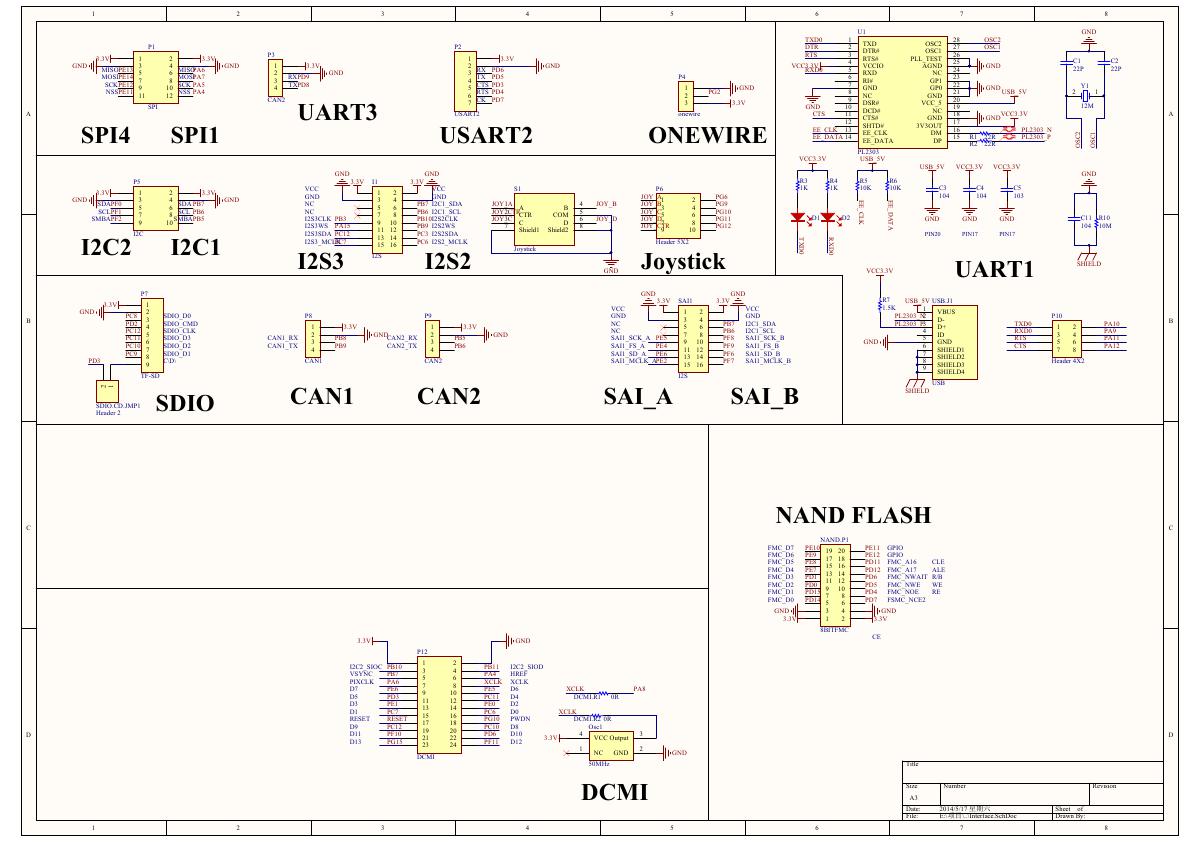 原理图(Open429Z-D-Schematic).pdf
原理图(Open429Z-D-Schematic).pdf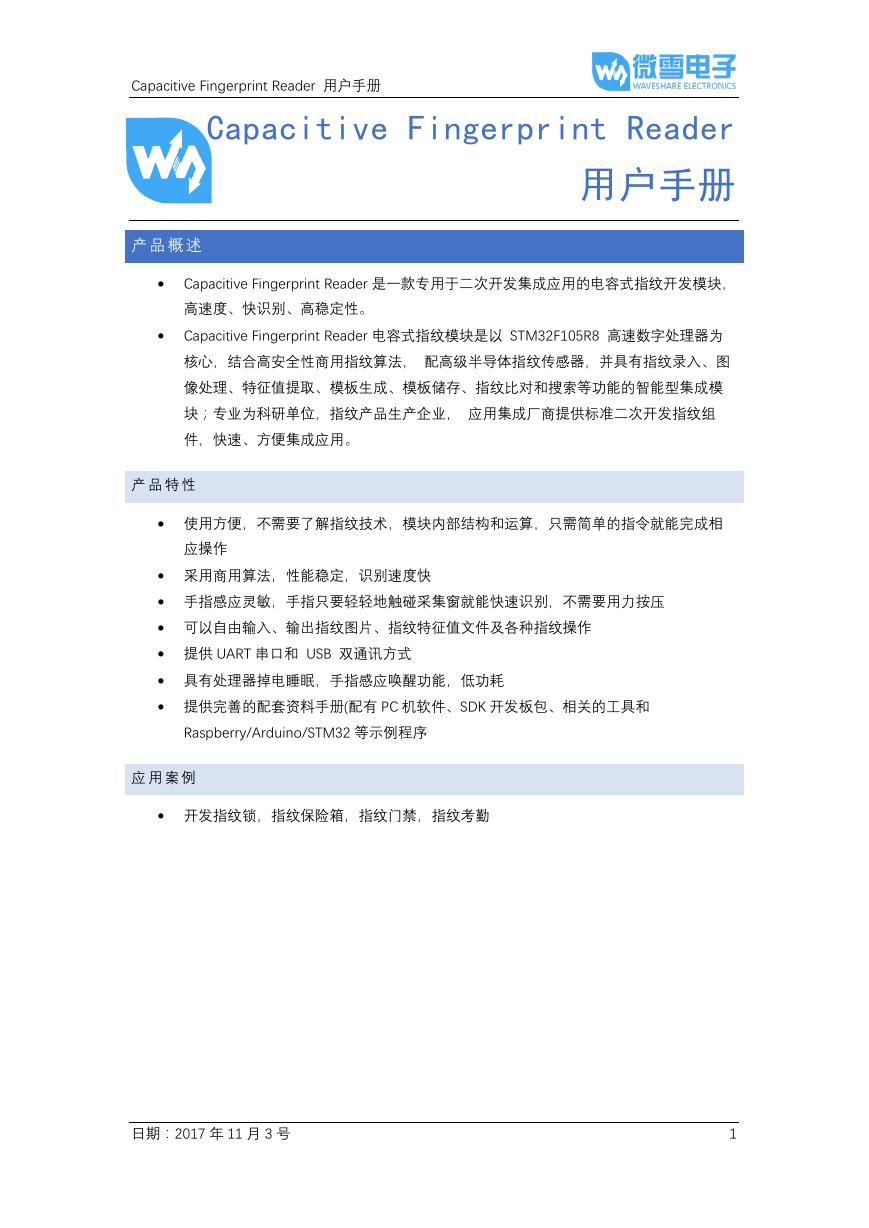 用户手册(Capacitive_Fingerprint_Reader_User_Manual_CN).pdf
用户手册(Capacitive_Fingerprint_Reader_User_Manual_CN).pdf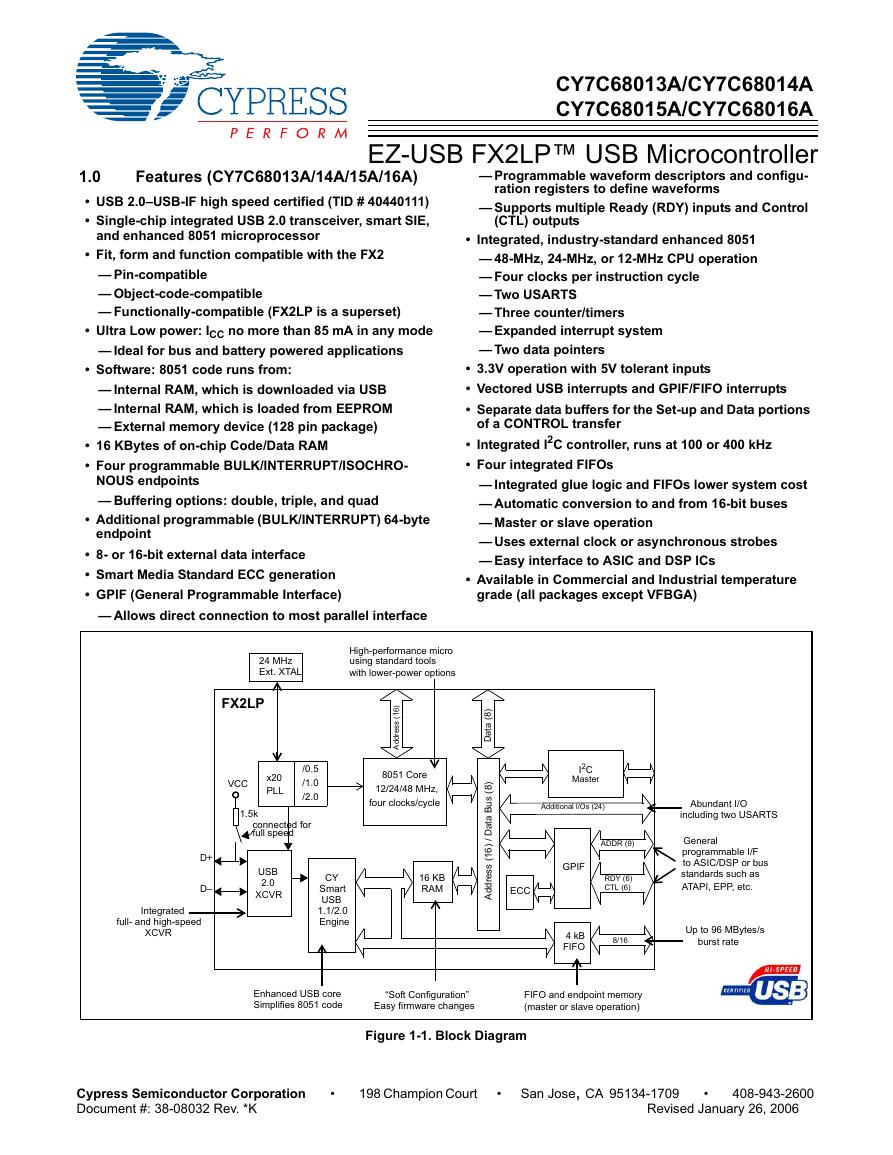 CY7C68013A(英文版)(CY7C68013A).pdf
CY7C68013A(英文版)(CY7C68013A).pdf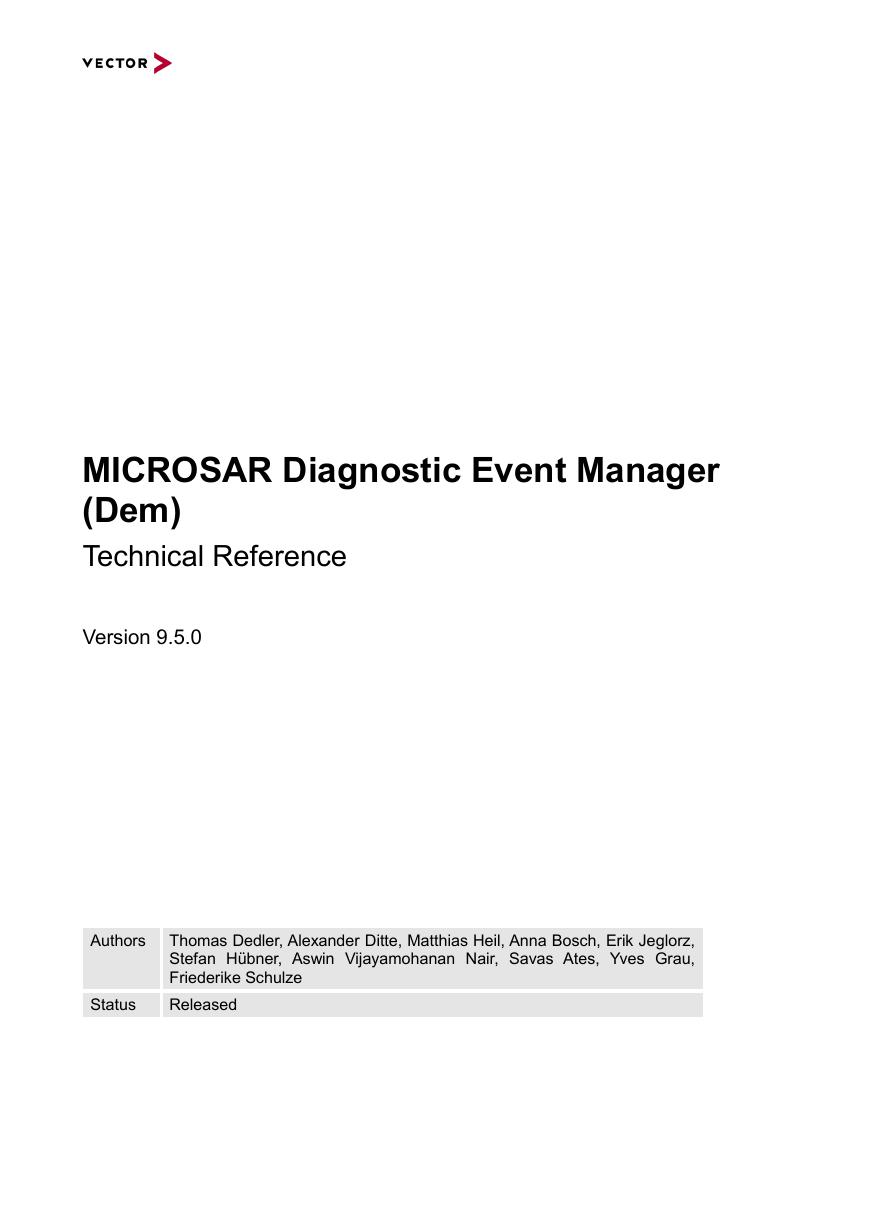 TechnicalReference_Dem.pdf
TechnicalReference_Dem.pdf